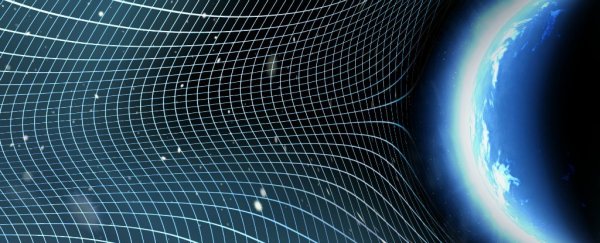Our current understanding of the Universe states that it's governed by four fundamental forces: gravity, electromagnetic, and the strong and weak nuclear forces.
But there are hints of a fifth force of nature, and if it exists, we'd not only be able to fill the remaining holes in Einstein's general relativity - we'd have to rethink our understanding of how the Universe actually works. And now physicists have figured out how to put this mysterious force to the ultimate test.
The four forces of nature are what holds the standard model of physics together, which is what we use to explain and predict the behaviour of particles and matter in our Universe.
At the smallest end of the scale are the two nuclear forces - the strong nuclear force is what holds atomic nuclei in place, and the weak nuclear force enables certain atoms to undergo radioactive decay.
Gravity and the electromagnetic force are on the larger end of the scale - electromagnetic force is needed to keep our molecules together, while gravity is responsible for ensuring that entire galaxies and planets aren't ripped apart.
It's all very neat and sensible, but there's a problem - in a lot of ways, gravity is the 'odd one out' in this very important group.
For one thing, gravity is the last of the four fundamental forces that humans haven't figured out how to produce and control.
It also doesn't appear to explain everything that it should - studies have shown that there's more gravity in our Universe than can be produced by all the visible matter out there.
The entity that we use to explain this gap - a placeholder called dark matter - hasn't exactly helped its case, because even our best technology can't find a trace of it.
Thanks to our inability to figure out what dark matter actually is, some physicists (very controversially) want to ditch gravity as a fundamental force altogether.
But instead of permanently dropping one of the fundamental forces of nature in the hopes that the Universe will make more sense without it, what if we added a fifth force that ties gravity to the others in ways we've never thought of before?
"Einstein's theory describes [gravity] beautifully well, but there's lots of evidence showing the theory has holes," says Andrea Ghez, director of the University of California, Los Angeles Galactic Centre Group.
"The mere existence of supermassive black holes tells us that our current theories of how the Universe works are inadequate to explain what a black hole is."
Ghez and her team are on the hunt for this hypothetical fifth force of nature, and say the best place to look would be somewhere in the Universe where the influence of gravity is so strong, signs of something extra will be easier to detect.
By analysing extremely sharp images of the heart of the Milky Way taken with by the Keck Observatory in Hawaii, the researchers can track the orbits of stars near our galaxy's supermassive black hole.
Based on these paths, they can measure the direct influence of gravity on the stars' movements, and figure out if something else is at play.
"This is really exciting. [O]ur work on studying stars at the centre of our galaxy is opening up a new method of looking at how gravity works," says Ghez.
"By watching the stars move over 20 years using very precise measurements taken from Keck Observatory data, you can see and put constraints on how gravity works."
The team is particularly interested in an event that's expected to take place next year, when a star called S0-2 will draw closer than ever to our galaxy's supermassive black hole, and be pulled in at maximum gravitational strength.
If there are any deviations from what general relativity predicts, this will be the best time to spot them.
"If gravitation is driven by something other than Einstein's theory of general relativity, you'll see small variations in the orbital paths of the stars," says Ghez.
This isn't the first time that physicists have actively hunted for the fifth force of nature - last year, a separate team detected signs of its influence in the energy signature of what appeared to be a new subatomic particle.
"If true, it's revolutionary," lead researcher Jonathan Feng from the University of California, Irvine, said at the time.
"If confirmed by further experiments, this discovery of a possible fifth force would completely change our understanding of the Universe, with consequences for the unification of forces and dark matter."
We're still a long way off figuring out if this force actually exists, but this new technique will be the first time scientists have ever looked for it in a gravitational field as strong as the one created by a supermassive black hole.
And even if we don't end up finding another force of nature at the heart of our galaxy, we'll likely gain a better understanding of gravity itself - something the standard model of physics desperately needs.
"It's exciting that we can do this because we can ask a very fundamental question - how does gravity work?" says Ghez.
Their research has been published in Physical Review Letters.
